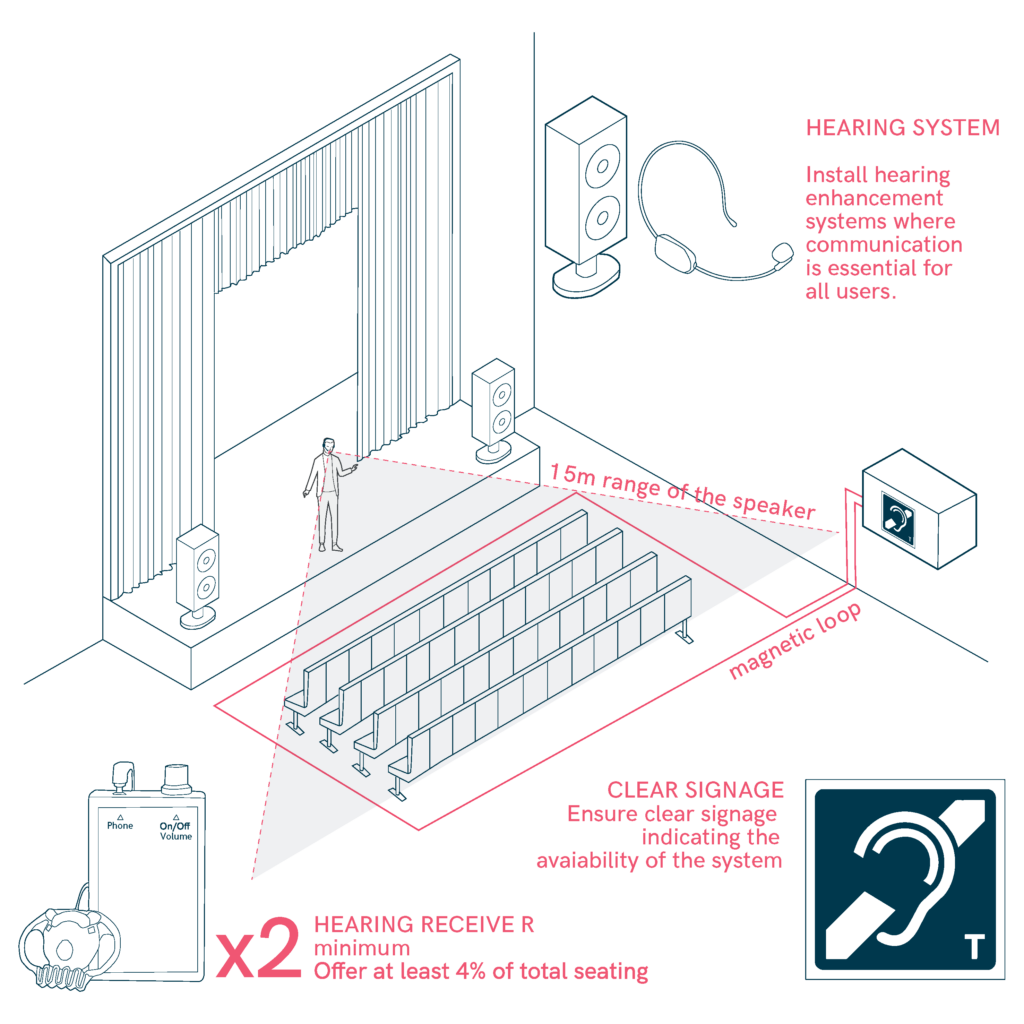Hearing Enhancement Systems
Hearing enhancement systems are essential for providing clear communication to individuals with hearing difficulties, especially in public spaces and venues where audible communication is crucial. Here are key recommendations for ensuring these systems are accessible and effective.

- Install hearing enhancement systems in venues like theatres, cinemas, and meeting rooms where communication is essential for all users.
- Ensure permanently installed systems in larger spaces with over 50 people or audio amplification needs.
- Provide portable hearing enhancement devices for smaller spaces like classrooms and reception areas.
- Offer at least 4% of total seating with hearing enhancement receivers, with a minimum of two receivers.
- Ensure systems work within a 15m range of the speaker, facilitating lip-reading and sign language users.
- Regularly test hearing enhancement systems, with feedback from users to maintain optimal performance.
- Protect induction loop wires from interference and ensure clear signage indicating the availability of the system.
Sources
- https://accessible-eu-centre.ec.europa.eu/content-corner/digital-library/en-172102021-accessibility-and-usability-built-environment-functional-requirements_en
- https://breeam.es/
- https://www.usgbc.org/leed
- https://evalore.es/servicio/certificaciones-medioambientales/
- https://www.codigotecnico.org/pdf/Documentos/SUA/DccSUA.pdf
- https://universaldesign.ie/built-environment/building-for-everyone/building-for-everyone-full-series
- Carers
- Children
- Cognitive
- Cognitive abilities
- Decolonial perspective
- Digital
- Digital barrier
- Enviroment
- Environmental
- Gender and generations
- Gender perspective
- Hearing impairment
- Low-education
- Low-income
- Older people
- Other
- Physical abilities and features
- Sensory and Physical
- Socioeconomic
- Visual impairment